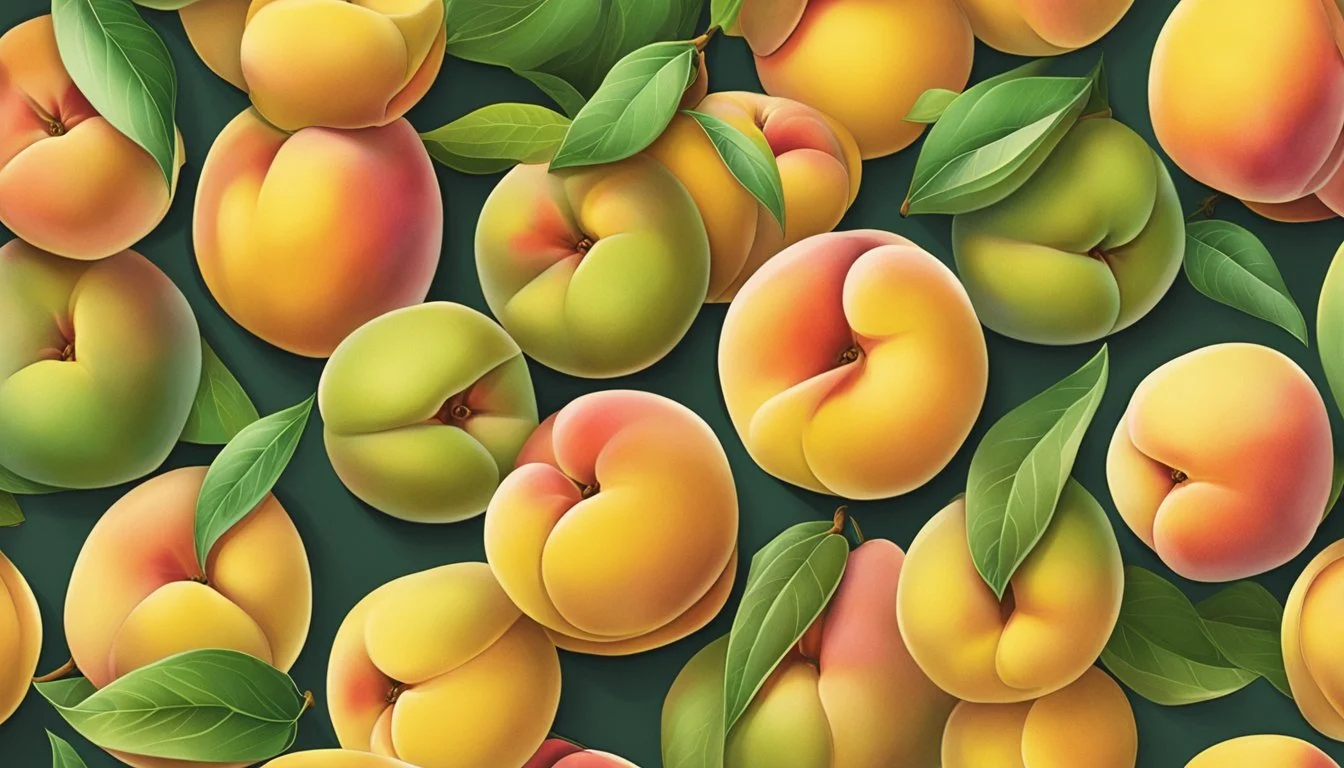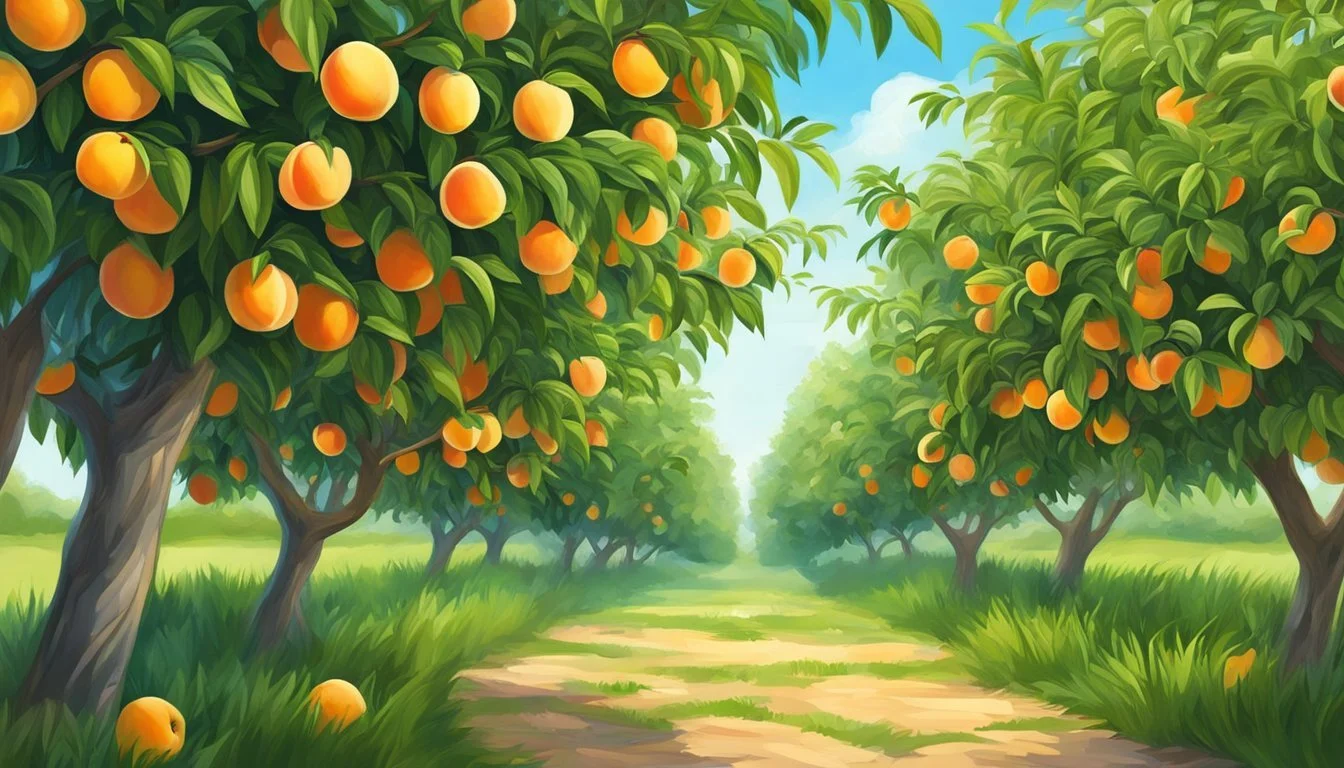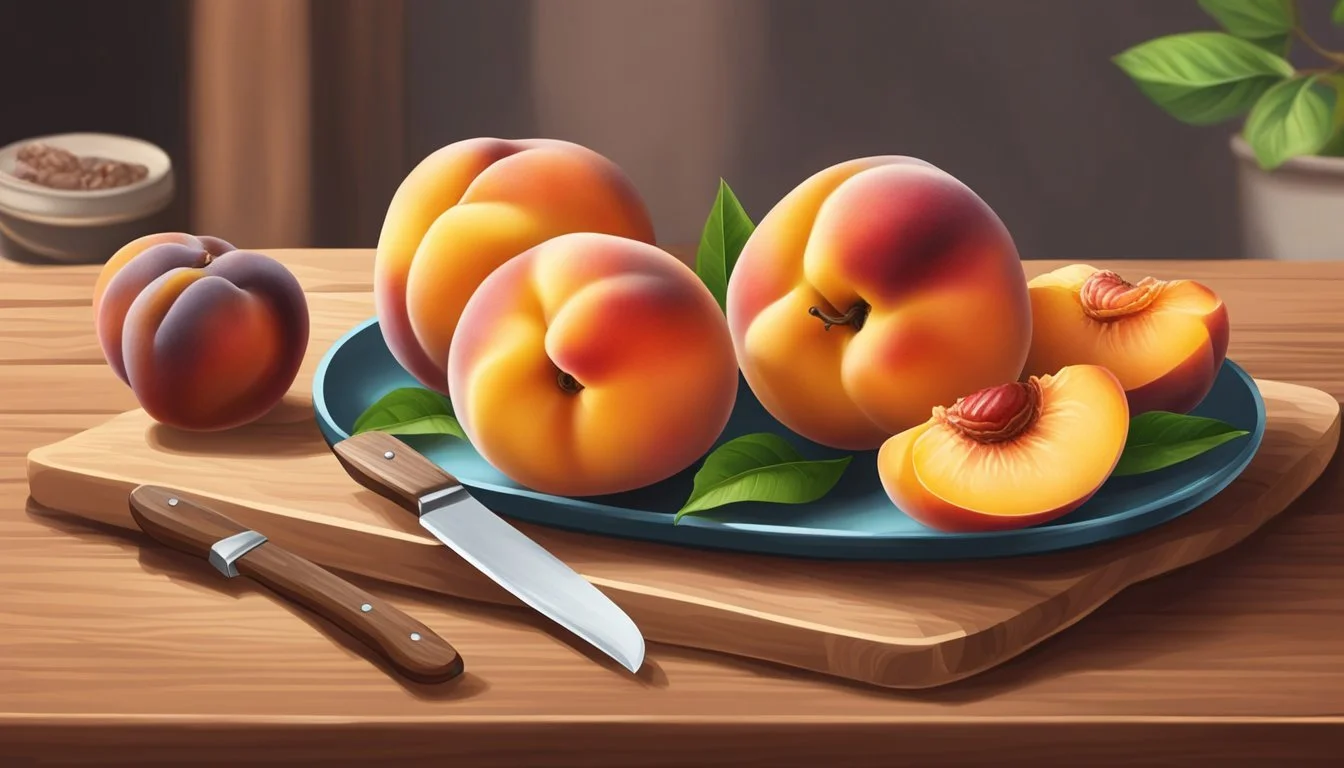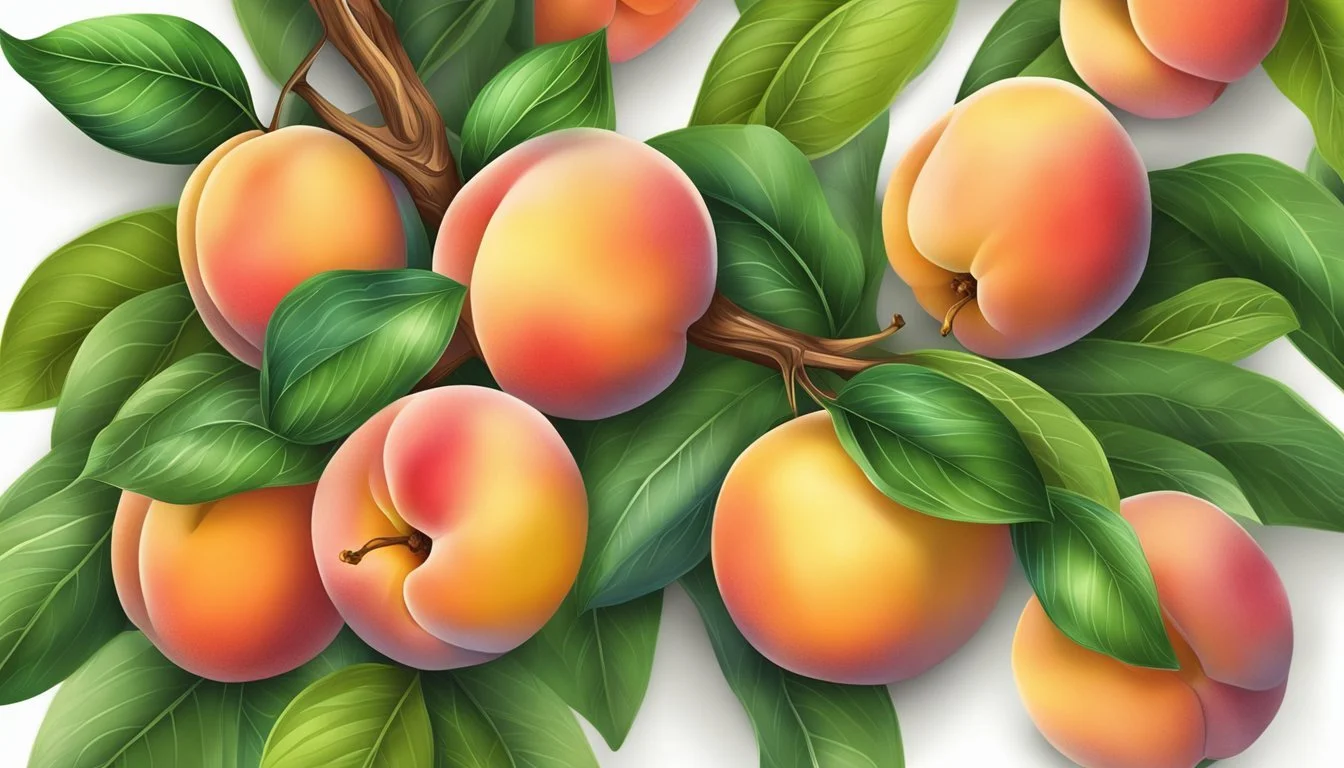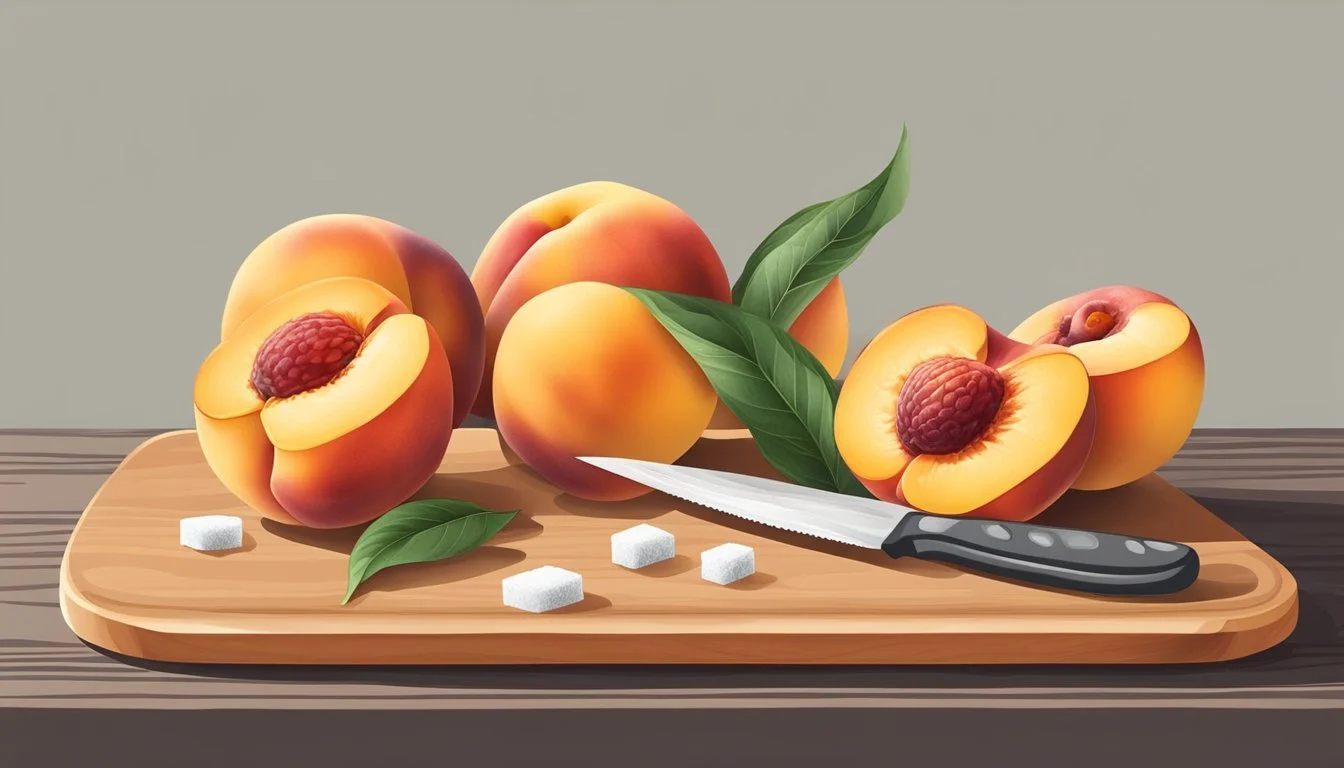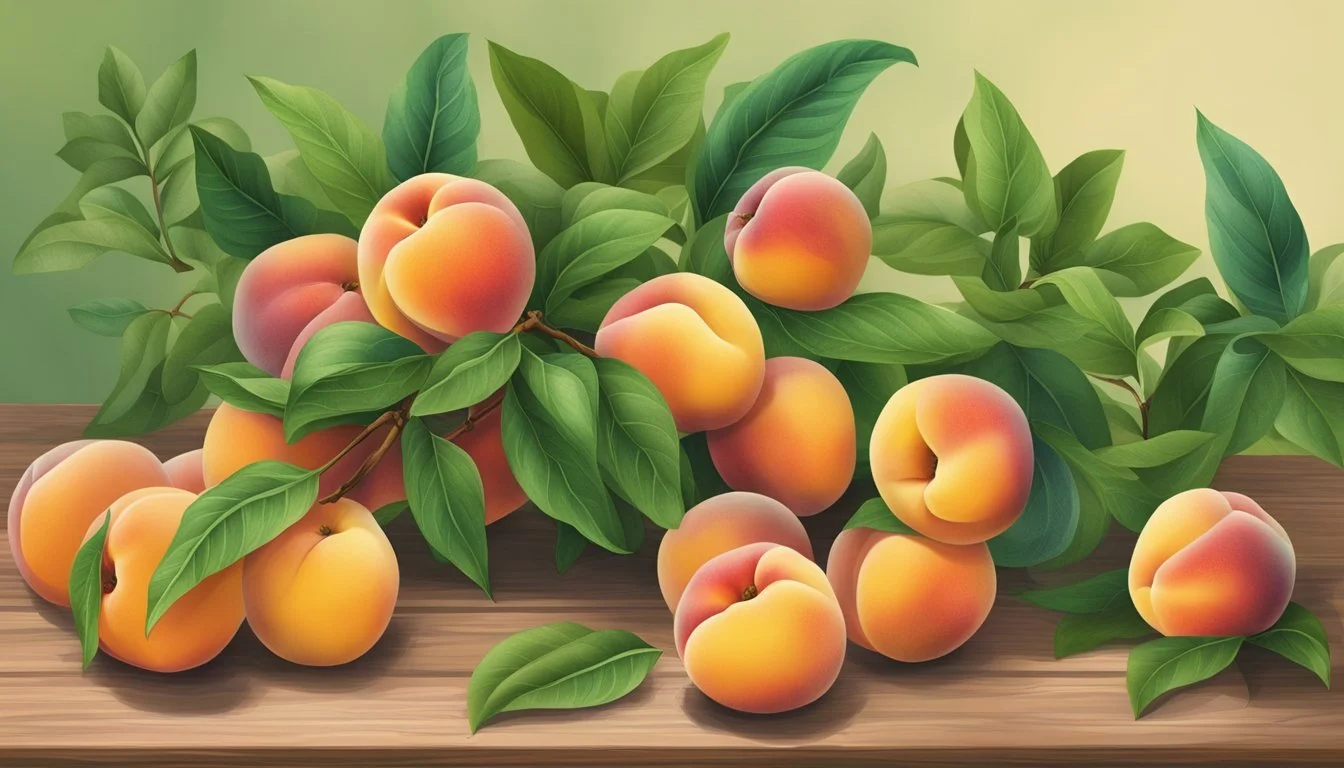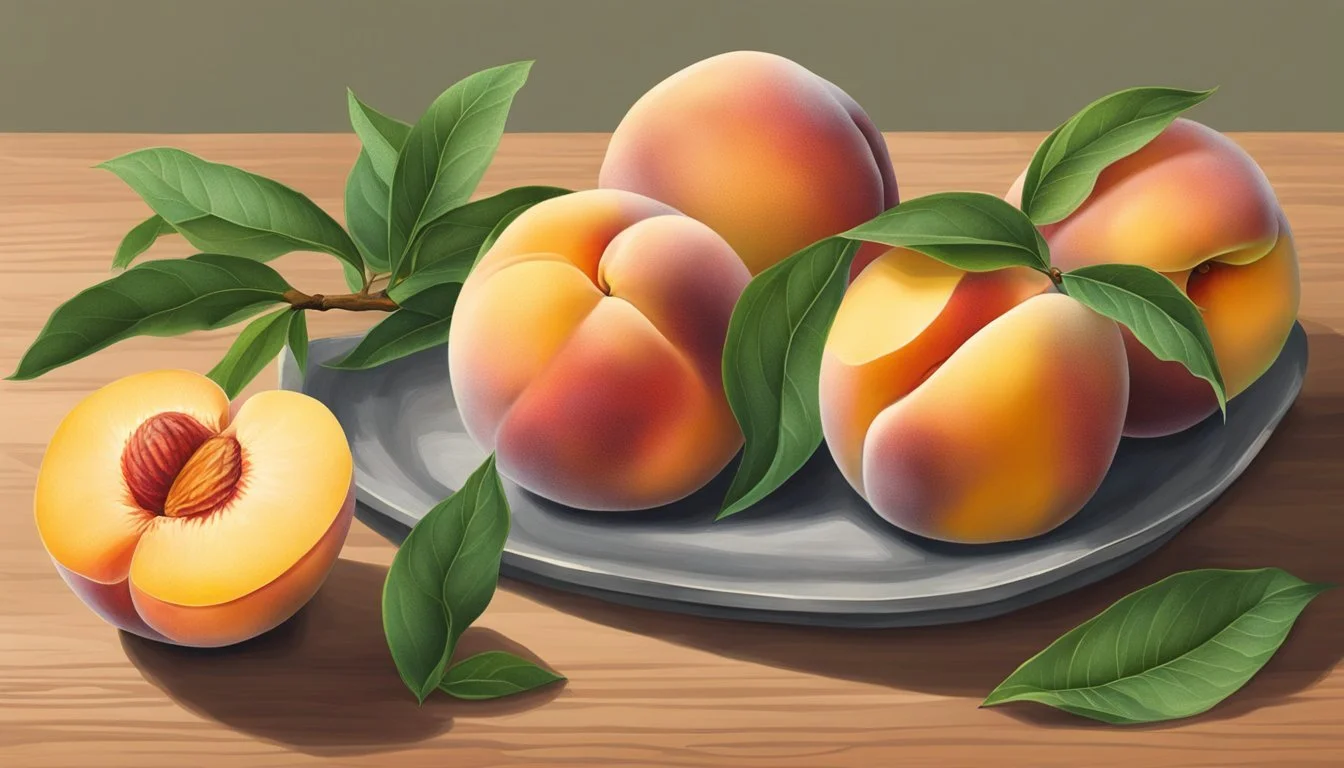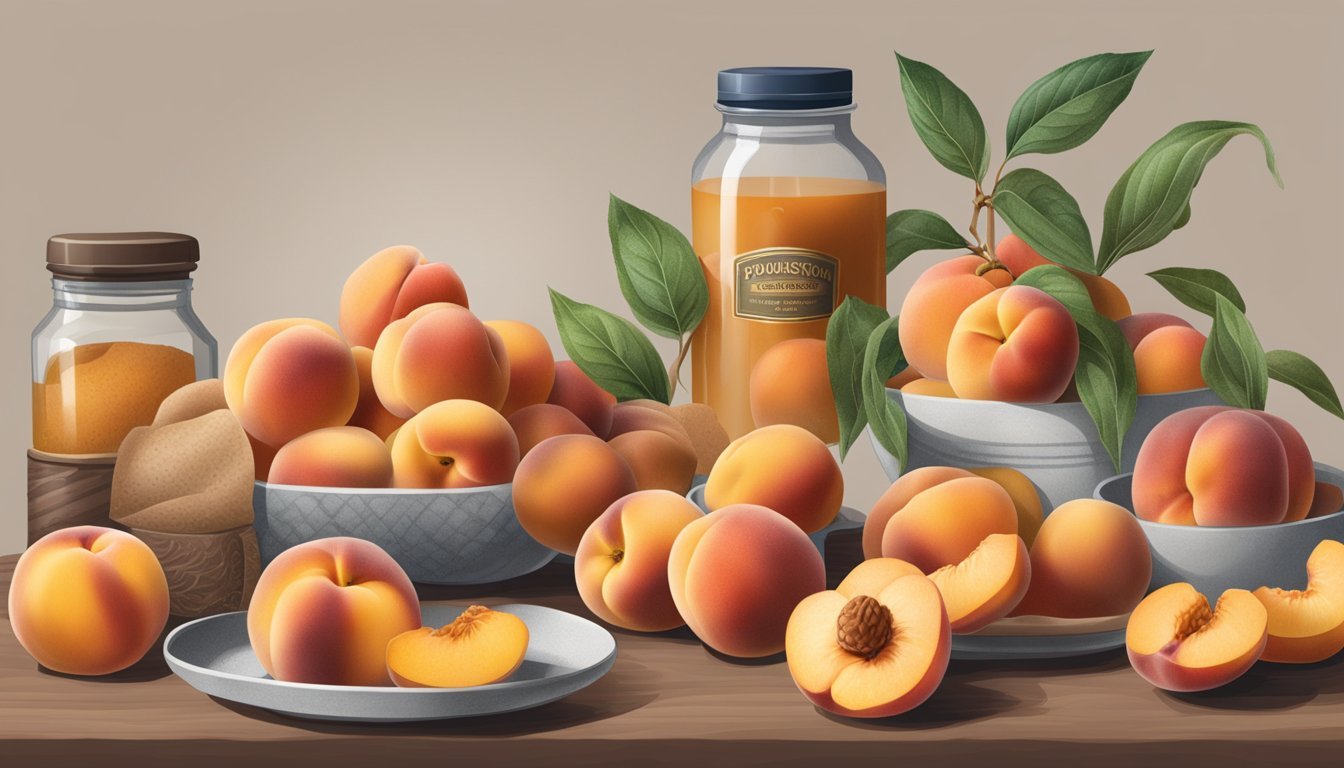How to Tell if Clingstone Peaches Are Ripe
Your Definitive Ripeness Checklist
Determining the ripeness of clingstone peaches is an essential skill for both home cooks and professional chefs alike. Clingstone peaches, characterized by their flesh clinging tightly to the pit, are sought after for their juicy texture and sweet flavor. Knowing when these fruits have reached peak ripeness ensures not only the best taste and texture but also the highest nutritional value. With a few simple techniques, one can easily identify ripe clingstone peaches, whether you're selecting them at the grocery store or picking them straight from the tree.
Understanding the seasonality and unique ripeness indicators of clingstone peaches can greatly enhance your culinary experiences. Unlike freestone peaches, where the flesh separates easily from the pit, clingstones pose a slight challenge when it comes to preparation and consumption. However, with proper knowledge, one can quickly learn to discern the subtle signs of ripeness, select high-quality fruit with confidence, and store them effectively to prolong their freshness. Whether they're destined to be eaten fresh, baked into desserts, or preserved for later enjoyment, ripe clingstone peaches can elevate the quality of many dishes.
Key Takeaways
Identifying ripe clingstone peaches ensures optimal flavor and nutritional benefits.
Seasonal knowledge and ripeness indicators are crucial for selecting and storing clingstone peaches.
Proper selection and storage techniques can enhance the use of clingstone peaches in a variety of recipes.
Identifying Clingstone Peaches
When one is seeking to identify clingstone peaches, it's crucial to focus on their defining characteristic: the flesh's adherence to the pit. This is in direct contrast to freestone peaches, which release their pits easily.
Distinguishing Clingstone from Freestone
Clingstone Peach: Recognizing clingstone peaches involves assessing how the flesh interacts with the pit. In clingstone varieties, the flesh clings tightly to the pit, making them more challenging to prepare for recipes that require pitted peach slices. They tend to have a sweeter taste and are generally the first to appear in the market during peach season.
Texture: Juicy and soft; the flesh does not separate cleanly from the pit.
Usage: Preferred for eating fresh due to difficulty in pitting.
Freestone Peach: In contrast, freestone peaches possess a fruit that effortlessly separates from the pit, making them ideal for cooking and baking purposes.
Texture: Less juicy than clingstones; firm flesh that easily comes away from the pit.
Usage: Suited for cooking, baking, and canning.
Semi-Freestone Peach: A hybrid category, semi-freestone peaches offer a compromise between the aforementioned varieties, with flesh that's not as tenaciously attached to the pit as clingstones but not as freely separable as freestones.
One should exercise care when procuring peach varieties for culinary projects, as the choice between clingstone and freestone can significantly impact the preparation process and the final outcome of the dish.
The Ripeness Indicators
Identifying the ripeness of clingstone peaches involves observing their color and appearance, assessing their touch and texture, and discerning their smell and aroma.
Color and Appearance
Yellow Hue: A ripe clingstone peach will typically have a deep yellow color. The presence of green may indicate that the peach is not yet ripe.
Stem Area: Near the stem, the skin should lack green tinges, and not be overly white, a sign of immaturity or lack of ripeness.
Touch and Texture
Firmness: Gently press near the stem; a little give indicates softness consistent with ripeness, while a hard feel suggests it’s not ready.
Skin Texture: The surface should be smooth and wobble-free, without wrinkles which often suggest an overripe peach.
Smell and Aroma
Peachy Scent: A fragrant, sweet, and distinctly peachy aroma is a strong indicator of ripeness.
Floral Notes: The presence of a floral scent can signify that the peach has reached its peak ripeness and is ready to be enjoyed.
Optimal Conditions for Ripening Clingstone Peaches
Ripening clingstone peaches to perfection involves understanding the right balance of environmental factors. Proper storage and techniques can coax unripe clingstone peaches into reaching their sweet, juicy potential.
Storing Unripe Peaches at Home
For peaches that are not yet ripe, it is essential to store them at room temperature. This provides a conducive environment for natural ripening processes. Peaches should be placed in a location away from direct sunlight, as exposure can lead to uneven ripening and potential spoilage. Instead, one should make use of a kitchen counter or a shelf that is cool and dry.
Accelerating the Ripening Process
If one wishes to make clingstone peaches ripen earlier, placing them in a paper bag can expedite the process. The bag traps ethylene gas, which is a natural compound that fruits emit as they ripen, thus speeding up ripening. For even faster results, adding a ripe banana or apple in the bag with the peaches can further increase the concentration of ethylene gas. Once the peaches reach the desired ripeness, they should be transferred to the refrigerator to halt further ripening and maintain their quality.
Harvesting and Seasonality
When harvesting clingstone peaches, understanding the role of chill hours and the specific seasonal harvesting times is crucial for getting ripe, succulent fruit. These factors play a significant role in the quality and availability of the peaches throughout the season.
Understanding Chill Hours
Clingstone peaches require a certain number of chill hours—periods of cold temperatures below 45°F—during the winter to regulate their growth cycle. This chilling period is essential for the tree to exit dormancy and be productive in the subsequent season. Typically, different peach varieties need between 700 to 900 chill hours. Adequate chill hours result in a more synchronized bloom, helping growers predict harvesting times more accurately. Trees that receive optimal chill hours are more likely to produce fruit in full sun, which is necessary for the fruit to develop sugar and achieve its characteristic sweetness.
Seasonal Harvesting Times
The harvest for clingstone peaches begins in the summer, with the exact timing varying by region and local climate conditions. In many areas, such as Texas, the clingstone peach season starts in mid-May and extends to June. These peaches are known for their flesh that clings to the pit, often ripening earlier in the season compared to freestone varieties. Knowledgeable growers keep a close eye on the peach color, which shifts from green to yellow or cream, and softening of the flesh to determine when the fruit is ripe. Peaches are ready for harvesting when they detach easily from the branch with a gentle twist. A ripe clingstone peach will also exude a sweet, fragrant aroma.
Timing is essential in clingstone peach harvesting; pickers must be attentive and harvest the fruit at its peak of ripeness to ensure optimal sweetness and texture.
Selection and Buying Tips
When selecting Clingstone peaches, it is crucial for shoppers to pay attention to certain indicators of ripeness and quality to ensure they are purchasing fruit that will provide the best flavor and texture.
Choosing Peaches at the Store
At the grocery store, supermarket, or farmers market, individuals should inspect the peaches for signs of ripeness and quality.
Color: Look for a golden yellow background color; green hues indicate the peach is not ripe.
Feel: The peach should yield slightly to gentle pressure, especially around the stem end.
Aroma: Ripe Clingstone peaches will emit a sweet and floral fragrance.
Those looking for peaches at the markets should be mindful of their firmness. A peach that feels excessively soft may be overripe, while a very firm peach will require time to ripen at room temperature. Additionally, bruising or extreme softness around the stem can signify that the peach is past its peak.
For those buying peaches in bulk at a grocery store or farmers market, selecting peaches with a consistent level of ripeness can ensure an even quality for eating or for use in culinary preparations.
Preparation and Usage
When dealing with clingstone peaches, an understanding of proper cutting techniques and their application in cooking and baking is essential. The flesh of clingstone peaches tends to adhere to the pit, making them a bit challenging to work with. Below, discover methods to successfully prepare these peaches for various recipes.
Cutting and Pitting Clingstone Peaches
To cut and pit clingstone peaches, one should use a sharp knife to slice along the natural seam, twist the halves gently, and then remove the pit with care to minimize bruising the fruit. If the pit proves stubborn, carefully cut the peach flesh into sections and then ease the pit out.
Steps for Cutting and Pitting:
Slice along the seam.
Twist halves gently.
Remove the pit with care.
If necessary, cut into sections for easier pitting.
Careful handling is key to protect the integrity of the fruit's flesh for use in recipes like peach cobbler or a classic peach pie.
Cooking and Baking
Clingstone peaches excel in dishes where the peach's shape isn't pivotal, such as in baking or making peach cobbler. They can be peeled and sliced, then tossed with sugar and spices before being added to batters or pastry. When baking, they lend a rich, sweet flavor and moist, tender texture to the final product.
Tips for Cooking and Baking:
Peach Cobbler: Toss peeled, sliced peaches with sugar, cinnamon, and a touch of lemon juice before baking.
Peach Pie: Combine sliced peaches with sugar, spices, and a thickener like cornstarch for a classic pie filling.
Preparation should be tailored to the specific recipe, but the juiciness and flavor profile of ripe clingstone peaches can bring out the best in both cooked and baked dishes.
Storing Ripe Clingstone Peaches
Proper storage of ripe Clingstone peaches is essential to maintain their freshness and prolong their shelf life. It ensures the peaches remain succulent and ready for consumption.
In the Refrigerator:
Ripe Clingstone peaches should be stored in the crisper drawer of the refrigerator.
They should be placed in a single layer on a paper towel to absorb excess moisture and prevent bruising.
Peaches can be kept in the refrigerator for up to a week.
Freezing Clingstone Peaches:
Freezing is ideal for long-term storage.
First, wash and dry the peaches thoroughly.
Slice the fruit, remove the pit, and peel if desired.
To prevent browning, one can briefly blanch the slices or coat them with a mixture of water and lemon juice.
Arrange slices on a baking sheet in a single layer, freeze until solid, and then transfer peaches to airtight freezer bags or containers.
Frozen peaches can be stored for up to six months.
To thaw frozen peaches, place them in the refrigerator overnight, or for immediate use, submerge the sealed bag in cold water.
Note:
Ripe peaches emit ethylene gas, which can hasten ripening in other produce.
It is important to keep them away from other fruits and vegetables in the refrigerator.
By adhering to these storage guidelines, one can ensure that Clingstone peaches are enjoyed at their optimal taste and texture for an extended period.
Health Benefits and Nutrition
Clingstone peaches, a nutritious fruit, are an excellent addition to one's diet. They provide a wealth of health benefits along with a substantial nutrient profile. These peaches are not only a delicious food option, but they also offer essential vitamins and minerals.
Vitamins & Minerals: Clingstone peaches are rich in Vitamin C, a powerful antioxidant that helps protect the body against free radical damage. Additionally, they contain Vitamins A and E, which promote skin health and vision, and potassium, which is vital for heart health and muscle function.
Dietary Fiber: With a considerable amount of dietary fiber, these peaches aid digestion and can help maintain a healthy digestive tract. The fiber also contributes to feelings of fullness, which can assist with weight management.
Low-Calorie Content: Peaches are low in calories, making them an ideal snack for those monitoring their calorie intake.
Hydration: They have a high water content, which can help with hydration, especially during the warmer months.
Nutrient: Vitamin C
Benefit: Enhances immune function and skin health
Nutrient: Vitamin A
Benefit: Supports vision and the immune system
Nutrient: Vitamin E
Benefit: Acts as an antioxidant
Nutrient: Potassium
Benefit: Essential for heart health and muscular function
Nutrient: Fiber
Benefit: Promotes digestive health and satiety
Clingstone peaches are part of a well-balanced diet and their consumption can contribute to overall health. They are not only flavorful but also benefit the body in a multitude of ways without adding excessive calories.
Cultivation and Maintenance
When cultivating clingstone peaches, growers must focus on providing optimal growing conditions and plant care, as well as vigilantly managing common peach diseases to ensure a healthy and abundant harvest.
Growing Conditions and Plant Care
Clingstone peaches thrive in conditions that feature full sun and well-drained, fertile soil. These trees require consistent care throughout the growing season, including:
Planting: It is crucial to plant peach trees at the correct depth, ensuring that the graft union is above the soil line. Trees should be spaced 12 to 16 feet apart.
Watering: Young trees need ample water, especially during the first weeks upon planting, and throughout the growing season during dry periods.
Fertilizing: Apply a balanced fertilizer like 10-10-10 or 20-20-20 according to the manufacturer's directions to promote healthy growth.
Pruning: Regular pruning is necessary to open up the canopy to sunlight and air, which is essential for proper pollination and fruit development.
Pollinating: Most peach varieties are self-fruitful, meaning they do not require cross-pollination from another tree.
Companion planting with garlic or onion can potentially improve peach tree health through their natural pest-deterrent properties.
Common Peach Diseases
Peach growers should watch out for several diseases that can affect the health and yield of peach trees:
Brown Rot: A fungal disease that can cause fruit to rot and must be managed through careful sanitation and sometimes fungicides.
Peach Scab: Identified by small, velvety spots on the fruit and leaves, it can be controlled by proper pruning and fungicides.
Peach Leaf Curl: Recognizable by the distortion and discoloration of leaves, this disease requires preventive fungicidal sprays during dormancy.
Bacterial Spot: This disease manifests as small, water-soaked marks on the fruit which can lead to secondary infections or premature drop.
Preventive care, including selecting resistant cultivars and adhering to a strict regimen of spraying and sanitation, can greatly reduce the incidence of these diseases.
Varietal Differences and Attributes
Understanding the varietal differences in peaches informs a consumer's choice when selecting ripe fruit for different culinary uses or direct consumption.
Peach Types and Their Unique Qualities
Clingstone Peaches: Identified by their flesh firmly adhering to the pit, these peaches typically have a softer texture and juicier flesh. They're considered ideal for eating fresh due to their sweet flavor but prove challenging in cooking due to the difficulty of removing the stone.
Typical Attributes:
Flesh Texture: Soft
Juice Content: High
Flavor: Sweet
Culinary Use: Primarily for fresh eating
Freestone Peaches: These varieties are characterized by flesh that readily separates from the pit. Freestone peaches tend to have firmer flesh, making them suitable for a wider range of cooking applications, including baking and canning.
Typical Attributes:
Flesh Texture: Firm
Juice Content: Moderate
Flavor: Sweet
Culinary Use: Versatile - eating fresh, cooking, baking
Semi-Freestone Peaches: This hybrid offers a combination of clingstone sweetness and the easily removable pit of a freestone, making them almost universally applicable in peach recipes, from fresh consumption to cooking and preservation.
Typical Attributes:
Flesh Texture: Comparable to clingstone
Juice Content: Moderate to high
Flavor: Sweet
Culinary Use: Baking, canning, eating fresh
White Peaches: With a pale, almost blush flesh, white peaches are sweeter and less acidic than their yellow counterparts. They are delicate, often preferred for raw dishes, or lightly cooked recipes to preserve their subtle flavor and aroma.
Typical Attributes:
Flesh Color: Pale, blush
Flavor: Sweet, low acidity
Culinary Use: Raw consumption, gentle cooking
Yellow Peaches: These are the classic peaches with a bold, tangy flavor and a bright yellow flesh. They hold up well in cooking and provide the traditional peach flavor many expect in pies and cobblers.
Typical Attributes:
Flesh Color: Bright yellow
Flavor: Bold, tangy
Culinary Use: Cooking, baking
Donut Peaches: Also known as "Saturn peaches," these are recognizable by their flat, donut-like shape. They are often sweeter and less acidic, with a thin skin that makes them easy to eat out of hand.
Typical Attributes:
Shape: Flat, donut-like
Flavor: Sweet, low acidity
Culinary Use: Fresh eating
Nectarines: Though not peaches, nectarines are closely related and often mentioned in discussions about stone fruits. They have a smooth skin with no fuzz and a flavor profile typically more intense than that of peaches. Nectarines can be either freestone or clingstone and are used similarly in culinary applications.
Typical Attributes:
Skin: Smooth, no fuzz
Flavor: Often more intense than peaches
Culinary Use: Similar to peaches; varies by stone type
Each peach type brings together a unique balance of texture, flavor, and color, which influences its best use from fresh eating to a vast array of culinary dishes.
Using Clingstone Peaches in Recipes
Clingstone peaches boast a sweet and intense flavor, making them excellent for eating fresh or incorporating into various dishes. Their flesh clings to the pit, which presents a challenge in some recipes, but their juiciness and robust taste are well worth the extra effort.
Sweet and Savory Dishes
Sweet Dishes:
Pies: Clingstone peaches, known for their sweetness, can be sliced and used in pies. It's recommended to mix both wedges and bite-size pieces for texture.
Jams: The juicy nature of clingstone peaches helps create flavorful jams that capture the essence of summer.
Peach Cobbler: Celebrated for their sweet profile, these peaches lend a rich, fruity dimension to any cobbler recipe.
Smoothies: Add a burst of natural sweetness to smoothies with ripe clingstone peaches for an irresistible taste.
Savory Dishes:
Salads: Thinly slice or dice clingstone peaches and add them to salads for a delightful blend of savory and sweet.
Canning: While clingstone peaches can be challenging to prepare for canning, their flavor intensity enhances preserved creations.
Savoury Flavors: Combine clingstone peaches with tart ingredients like balsamic vinegar to balance their inherent sweetness in savory plates.
The ripe, juicy clingstone peaches add depth to both classic desserts and inventive savory meals, revealing their versatility despite the preparation needed to free the flesh from the pit.
Preservation Techniques
To maintain the quality and taste of ripe clingstone peaches, preserving them through canning and freezing is essential.
Canning
Canning is a method that involves placing the peaches in jars and sealing them with lids to prevent spoilage. The process begins by washing the peaches thoroughly, followed by peeling and slicing them. Peaches can be canned in water, juice, or syrup, with the latter helping to preserve the fruit's flavor and firmness. It's crucial to use a boiling water canner for the canning process to ensure that the peaches are processed safely. Peaches should be packed into the jars, leaving adequate headspace, and the jars should be processed according to the altitude of the location to ensure proper sealing.
Wash and peel the peaches.
Slice the peaches and remove pits.
Fill jars with peaches and cover them with your choice of liquid.
Process in a boiling water canner, adjusting time for altitude.
Freezing
Freezing is another preservation technique suitable for clingstone peaches. The process involves selecting ripe, unblemished peaches and preventing browning during preparation, which can be done by using a solution of ascorbic acid or lemon juice. The peaches should be washed, blanched, peeled, and sliced before being spread on a baking sheet to freeze individually. Once frozen, the peach slices can be transferred to airtight containers or freezer bags. Freezing peaches in this manner ensures they remain separate and easy to use in individual servings.
Prevent browning with ascorbic acid or lemon juice.
Blanch to peel easily.
Slice and lay on a baking sheet to freeze individually.
Transfer to airtight containers or freezer bags.
Significance in Culture and History
Georgia is renowned for its peaches, earning the nickname "The Peach State." The peach (Prunus persica) has played a key role in the state's agricultural history since the 19th century. It stands as a symbol of Southern hospitality and reflects a rich cultural heritage.
The proliferation of peaches in Georgia can be traced back to the introduction of the Prunus persica from Asia over centuries. The region's favorable climate and soil conditions enabled the fruit to thrive. As the industry grew, so did the cultural significance of peaches within the state.
Throughout history, the peach has been celebrated in various local festivals and cultural events, signaling the start of the harvest season and showcasing the fruit's versatility in culinary traditions. The Georgia Peach Festival, for instance, has been a recurring event that honors the fruit and its contributions to the state's economy and way of life.
Cultural Representation:
Peach as a symbol of good will and hospitality.
Annual festivals highlighting the importance of the peach industry.
Historical Development:
Adoption and cultivation of Prunus persica leading to economic growth.
Evolution of the peach from a garden novelty to a commercial staple.
In net consequence, the peach's prominence in Georgia's culture and history is evident through its continued representation in local traditions, economic significance, and status as a culinary favorite. The peach and its varieties, including clingstone peaches, remain integral to the region's identity.
Troubleshooting Common Issues
When dealing with clingstone peaches, it's important to handle common problems that can affect the quality of the fruit, such as overripeness and bruising.
Dealing with Overripe or Bruised Peaches
Overripe Peaches: Once peaches surpass the ideal ripeness, they become very soft and may start to deteriorate quickly. Overripe peaches should be consumed or processed as soon as possible to avoid spoilage. They are still usable in various recipes such as smoothies, peach compotes, or baked desserts where the texture of the peach is less critical.
Uses for Overripe Peaches:
Smoothies: Blend overripe peaches for a sweet addition to breakfast or snack smoothies.
Baking: Puree and incorporate them into batter for cakes or muffins.
Preserves: Cook down with sugar to make peach jam or preserves.
Bruised Peaches: Bruising can occur when peaches are mishandled or are too ripe. Bruised areas should be cut away before consuming or cooking, as they may harbor bacteria or have an unpleasant texture.
Tips for Handling Bruised Peaches:
Cut away: Carefully remove and discard any discolored or soft parts.
Cooking: Use the salvageable parts for cooked dishes where the bruising will not be noticeable, like peach cobbler.
Pairing with Other Foods
Selecting the perfect pairing for clingstone peaches enhances their natural flavors, as these peaches are known for their pronounced sweetness and juicy texture.
Complementary Flavors and Ingredients
Clingstone peaches possess a delightful sweetness that can balance well with acidic and tart components, making them versatile in the kitchen. These peaches are ideal partners for:
Cheese: Soft cheeses like burrata or ricotta can provide a creamy texture contrast, while sharper ones like blue cheese or feta offer a flavor counterpoint.
Herbs: Fresh basil, mint, or thyme complement the peaches' sweetness and add a fresh aromatic layer.
Meats: Lightly seasoned chicken or pork, avoiding heavy spices like garlic and onion, can allow the peaches' flavor to shine, particularly when grilled.
Wine: A Riesling or Prosecco, with their light, fruity profiles, can echo the peaches' sweetness while providing a bubbly contrast.
Dressings and Vinaigrettes: A dressing with a hint of tart like balsamic vinegar can underline the fruit's sweetness in salads.
Desserts: Vanilla, almond, and cinnamon are great in desserts, highlighting the peaches' natural flavor without overwhelming it.
The fragrance of clingstone peaches can augment the sensory experience of dishes, be it in a simple fruit salad or a complex gastronomic creation. The key in pairing is to let the peach's natural sweetness and aroma take center stage.
Conclusion
Selecting ripe Clingstone peaches requires attention to specific cues that signal their readiness for consumption.
Visual Inspection: One should look for a background color that has changed from green to yellow or cream. A ripe Clingstone peach will also exhibit a slight give when gently pressed.
Aroma: A distinct sweet and floral fragrance is indicative of a ripe peach.
Texture: The fruit should feel slightly soft but not mushy, indicating the flesh is ripe and juicy inside while still retaining its structure.
Flesh Attachment: As the name suggests, Clingstone peaches have flesh that clings to the pit. While this does not change with ripeness, ease of slicing may slightly improve when the peach is at its peak maturity.
When selecting Clingstone peaches, one must balance these factors to ensure they are choosing a fruit that is at the perfect stage of ripeness for their culinary needs. Whether eating fresh or incorporating into recipes, recognizing the signs of ripeness will lead to a more enjoyable peach experience. Remember that the sweetest Clingstone peaches appear earlier in the season, so make the most of this time for the best flavor.

